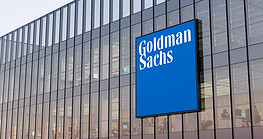 |
Times have been hard recently for banks’ information technology departments. The collapse of the subprime mortgage and housing markets has led to massive write-downs at many global banks as well as the default of some smaller banks. The credit crunch, declining investment banking and securities revenue and a sluggish economy have put pressure on many banks’ IT budgets and limited new projects that do not show an immediate return on investment, analysts say.
Meanwhile, the maturing Internet is constantly changing and developing, with new technology, applications, shifting business models, growing competition from other banks and non-banks and evolving customer demands and needs. Financial institutions face a monumental challenge to keep up with it all. And security continues to be a big issue, with identity theft, phishing and security flaws in web servers and browsers among the problems to tackle.
Amid all of this, the leading banks are still finding ways to succeed online. Such banks as Bank of America, BBVA, Citi, Hansabanka, HSBC, Standard Chartered and Wells Fargo, among others, are using the web to boost their customer bases in growing markets, build deeper relationships with existing clients, gather deposits, generate payment and trading revenue, cross-sell products and continue to reduce processing and servicing costs.
In fact, some banks are even putting an “increased focus on the web channel as an important tool to deal with a soft economy,” says Matthew Lawlor, chairman and CEO of Online Resources, a Virginia–based provider of outsourced web-based financial technology services to banks and other financial firms.
Global Finance’s World’s Best Internet Banks awards honor the banks that are innovating and prospering online. In this issue, award winners are named in country and regional sub-categories across six different major global regions. These are the banks finding customer, deposit and revenue growth online and developing integrated online corporate and consumer banking services that meet clients’ increasing demands for integration, ease of use, speed and control. The award-winning banks believe that online banking customers are generally more profitable and loyal than offline clients.
The web banking industry, overall, has seen tremendous growth. For example, the number of users of online banking in the United Kingdom has increased more than sixfold from less than 3.5 million in 2000 to slightly more than 21 million last year, according to a July 24 report from APACS, the UK payments association.
Mobile Banking
As more people adopt smart phones such as the iPhone and BlackBerry, mobile banking is starting to take off. This is critical for banks because it allows them to attract the younger consumers and corporate users who are often accustomed to using their mobile phones for web access, email, information and transactions.
Bank of America (BofA), which introduced its first mobile banking services nationally in May 2007, has already attracted more than a million active users of the services. Predictably, the most active users have been under the age of 35. There is still a lot of room for growth, as BofA has more than 25 million online banking customers overall.
Despite technical and security challenges inherent in mobile banking, many banks and analysts view it as a critical component of future online success. “The mobile channel may be optional for now, but customers will eventually come to expect it as a fundamental requirement,” according to a July 2007 report entitled “Web 2.0: A Quantum Leap for Wholesale Banking,” produced by Boston–based research firm Celent. “However, banks will pocket increased revenue from customers adding services and having constant access to their accounts and transactions,” the report says.
Indeed, a key emerging theme in the maturing web-banking marketplace is the necessity for banks to have their web systems running constantly, to provide quality customer service and to offer rapid response times.
Challenges Ahead
It is clear that banks are also facing many issues that could be barriers to future success on the web. One big challenge is the issue of security, which continues to bedevil the financial services industry and e-commerce in general. A recent University of Michigan report revealed that more than three-quarters of the 214 bank websites it examined in the United States contained security design flaws that could allow fraudsters to steal customer data and access their accounts. The report identified five design defects in bank websites. They include presenting secure login forms on insecure pages, providing contact information and security advice on insecure pages, inadequate policies for user IDs and passwords, emailing security-sensitive information to customers insecurely and redirecting users to new web pages that have different domain addresses without warning. It should be noted, however, that the researchers conducted the study in November and December of 2006, and a number of banks may have corrected the flaws since then.
Still, the security challenge is not going away. According to the APACS report, Internet banking fraud losses in the UK have begun to decline, but phishing attacks (mass emails sent by fraudsters to consumers to lure them to reveal personal data to a fake bank website) are skyrocketing. In 2007 losses for online banking fraud totaled £22.6 million ($44.5 million)—a decline of 33% from 2006, when losses totaled £33.5 million. But the number of reported phishing incidents jumped to 20,682 in the first half of 2008 from 7,224 in the same period of 2007, according to APACS.
Another major challenge facing banks is keeping up with the maturation and evolution of the Internet. The move toward Web 2.0 is bringing to the fore more dynamic, customized applications as well as highlighting the growth of social networking, online communities, video, blogs, real-time data feeds and mobile applications.
Many banks have been slow to catch on to the wave of next-generation applications, according to Celent, which says that banks have a lot of work to do to improve the online experience of their wholesale banking clients. The report expressed disappointment with the solutions available for small-business banking and corporate cash management and said that usability and customer service are lacking.
Corporate, small-business and consumer users are becoming accustomed to the customized, user-friendly, data-rich experience they get at non-bank websites. Banks need to start offering a customized experience, Celent says.
“Although they have been slow to come out of the gate, banks will recognize the requirement to change and will completely alter their online experiences,” the Celent report says, noting that this “dramatic shift will take place at most banks over the next three years.”
THE AWARDS: HOW THEY WORK
In this issue we reveal the best corporate/institutional and consumer Internet banks at the country level. Regional and global winners in these categories will be announced at an awards ceremony in New York in November and in our December issue.
The current issue also identifies the award-winning banks in six corporate/institutional and seven consumer sub-categories in the six regions, including “Best Online Cash Management” on the corporate side and “Best Bill Payment & Presentment” in consumer banking. Another key sub-category is “Best Information Security Initiatives,” honoring both corporate/institutional and consumer banks. This sub-category honors banks with the most comprehensive and forward-thinking strategies to address security risks. Global winners in the sub-categories will also be announced at the awards dinner and in the December issue.
All first-round winners were chosen from entries evaluated by a world-class judging panel featuring consultants from Celent, WNS, Infosys and Wipro. Global Finance editors were responsible for the final selection of winners in the first round. Only banks that entered the competition were considered for awards, and awards are given only in those regions, countries and categories in which there were entries.
Winning banks were selected based on the following criteria: strength of strategy for attracting and servicing online customers, success in getting clients to use Internet offerings, growth of online customers, breadth of product offerings, evidence of tangible benefits gained from Internet initiatives, website design and functionality, and the strength of the banks’ security initiatives.
Adam Rombel



